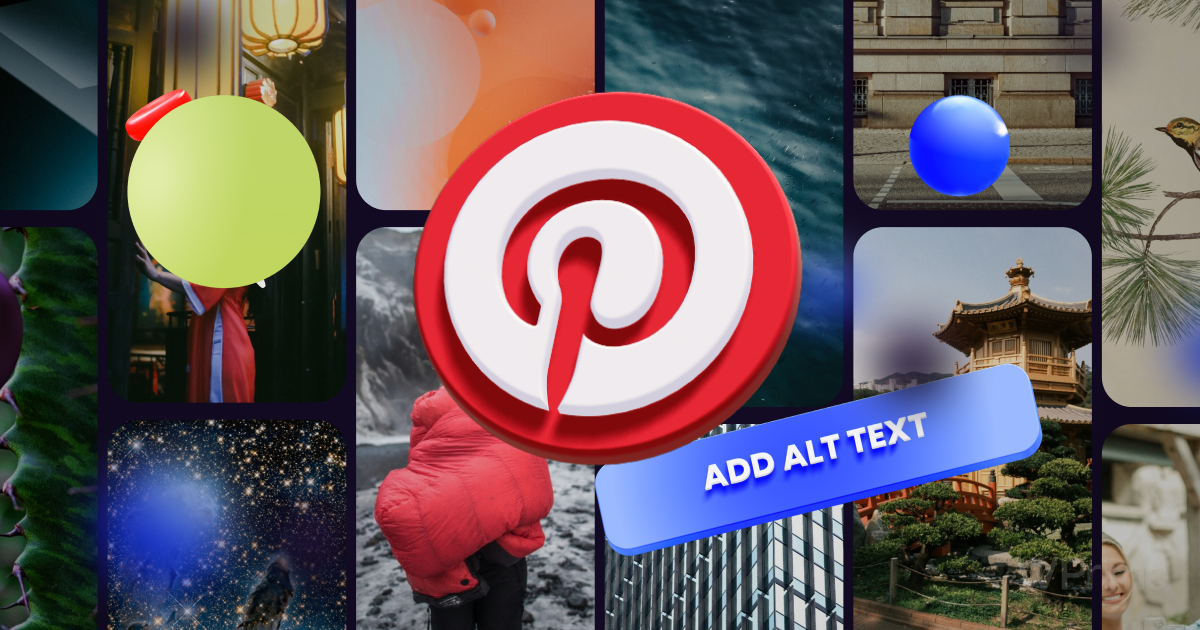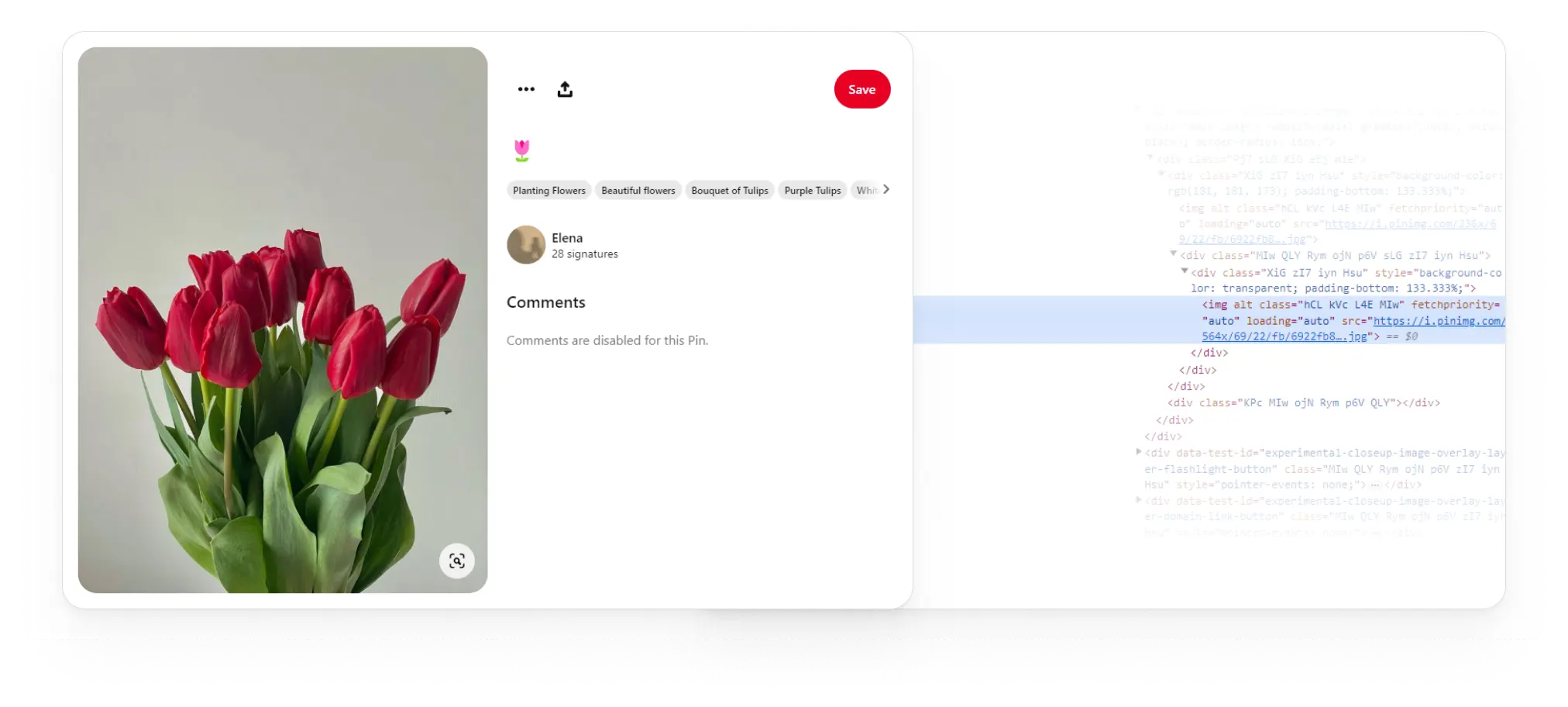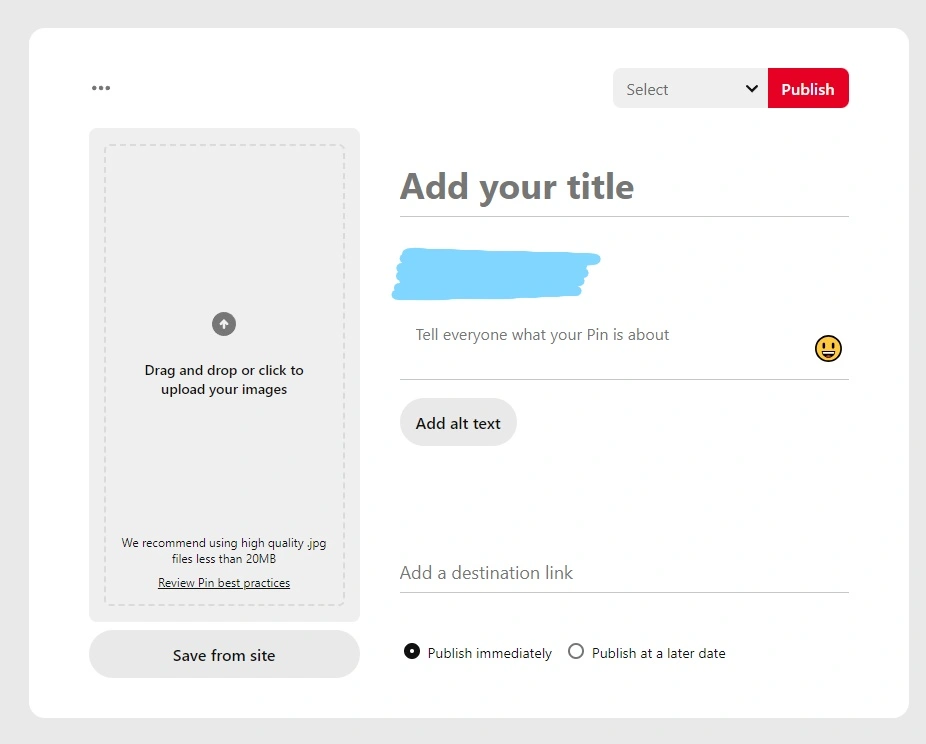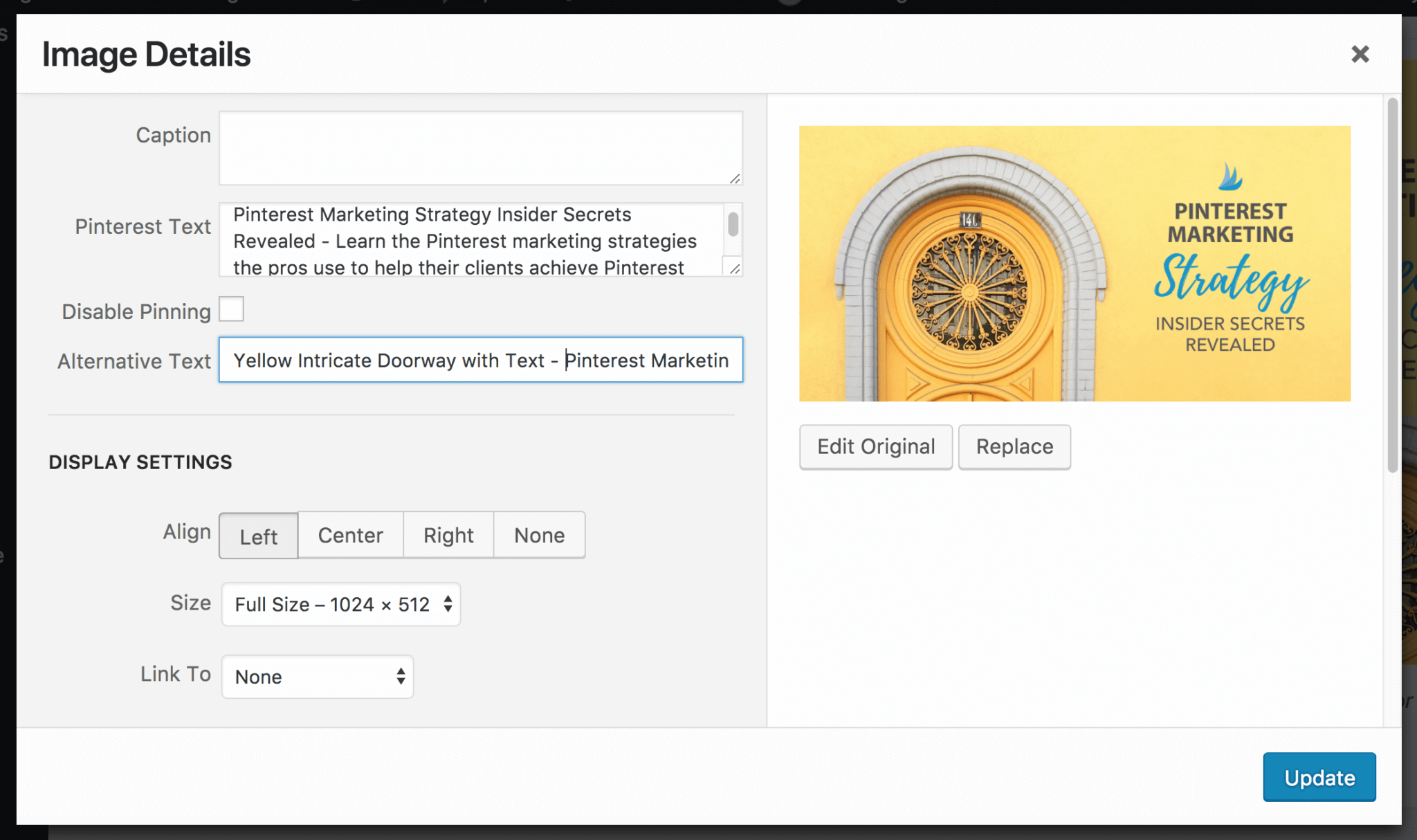
Vlad Yudkin
March 7, 2024
How to Use Pinterest Alt Text: A Comprehensive Guide
Pinterest has emerged as a powerhouse for driving organic traffic and engaging audiences through visually compelling content. With its user-friendly interface and a diverse array of pinboards, Pinterest offers businesses and creators an unparalleled platform to showcase their products, ideas, and inspirations.

As Pinterest continues to be a go-to destination for discovery and inspiration, understanding the nuances of optimizing your content becomes crucial. One often overlooked yet powerful tool for enhancing Pinterest visibility is alt text. Here you can learn how to make your pins more accessible and discoverable to a broader audience and Google.

What is Alt Text on Pinterest?
Alternative text is a descriptive text attribute added to a pin to provide a textual interpretation of the image. This text serves as a substitute for the visual content for individuals who may be unable to view the images, such as those with visual impairments or when images fail to load. Alt text is valuable for search engine optimization (SEO) and your business, as it provides context and information about the images to search engines. With optimized alt text people are more likely to subscribe!
When creating alt text, it is important to make sure you follow these tips:
- Provide a clear and detailed interpretation of the image for people. Describe everything clearly. Think about what information someone would need to understand the content without seeing the image.
- Ensure that your alt text is relevant to the title, context of the page or post. It should contribute meaningfully to the overall content for visually impaired.
- While being descriptive, strive for conciseness. Aim for a balance between providing enough information and avoiding unnecessary details.
- Incorporate relevant keywords related to the image content. This can improve search engine optimization (SEO) and enhance discoverability.
- Skip phrases like “image of” or “picture of” in your alt text. Screen readers already announce that they are describing an image to the people that don't see it, so such phrases can be redundant.
- Think about how the photo or image contributes to the overall context of the content. Tailor your alt text to convey the specific role of the image on the page.
Here are some good alt text examples for pins:
- “Mouthwatering chocolate chip cookies fresh out of the oven, stacked on a rustic wooden table with powdered sugar.”
- “Breathtaking sunset over the Eiffel Tower, Paris skyline in silhouette against a vivid orange and pink sky.”
- “A guide to crafting a handmade succulent planter using recycled materials, showcasing the final product on a sunny windowsill.”
How to Add Alternative Text on Pinterest?
- Start by creating a new pin or editing an existing one. You can click on the “Create Pin” in the top left corner, or by editing an existing pin.
- Next, upload the image you want to pin.
- In the pin creation or editing window, you'll find fields to type a title and description. The “add alt text” field in the menu is where you can write your alternative text. In this field, provide a clear and concise interpretation of the image. Pinterest allows adding up to 500 characters, but we suggest limiting it to 125 characters. Anything more than that will not be read by screen readers.

- Once you've filled all the fields and tags, proceed to save, or publish your pin as on the image above.
How to Optimize Images on Your Website for Pinterest and Search Engines?
We found out that alt text is very important for SEO. We also discovered how to attach it to our pins. But there is also a way to optimize your website images for both search engines, Pinterest and people. Let’s find out how right now!
What happens if someone will pin an image with an alt text from your website? Pinterst will add the alt text to the pin’s description. This is not quite what you want to happen.
Pin descriptions are visible to all users, whereas alt text is specifically designed for users who rely on screen readers, apps, or other assistive technologies. If you use the same text for both, it can create redundancy and may not provide additional information for users who can see the images. You may also miss the opportunity to include additional relevant keywords in your description, potentially affecting your content's discoverability. You might want your pin descriptions to include marketing or promotional language.
A normal code of an image looks like this:
img src="your-image.jpg" alt=" Alt Text"
If we want to optimize this image for both Google and Pinterest, the code should look like this:
img src="your-image.jpg" alt="Alt Text" data-pin-description="Pinterest description"
This addition lets you type the description for Pinterest. When a user pins your image – it will have your written text. This can greatly increase your traffic.
WordPress Plugin to Optimize Images for Pinterest SEO
Numerous plugins are available to enhance image optimization for optimal Pinterest SEO performance. One noteworthy plugin that stands out is WP Tasty Pins. This tool offers a range of features designed to boost the visibility and discoverability of your images on Pinterest, ensuring that your content reaches a broader audience.
This plugin allows you to add pin title and alt text to your images. It also has many other features that you might want to check out.
Conclusion
The importance of Pinterest alt text cannot be overstated in the realm of visual content marketing. Alt text serves as a critical bridge to accessibility, ensuring that individuals with visual impairments can engage with and comprehend the content we share. Beyond its inclusive impact, incorporating well-crafted alt text on Pinterest significantly contributes to search engine optimization, enhancing the discoverability and reach of your pins.
By taking the time to provide thoughtful and descriptive alt text, you not only make your content accessible to a diverse audience but also unlock the potential for increased visibility and engagement. It's a small yet impactful step that resonates with the core principles of inclusivity and digital outreach, making your Pinterest presence more meaningful and effective. Embracing the power of alt text is, indeed, a strategy that not only aligns with accessibility standards but also positions your content for broader success in the dynamic landscape of visual discovery.






